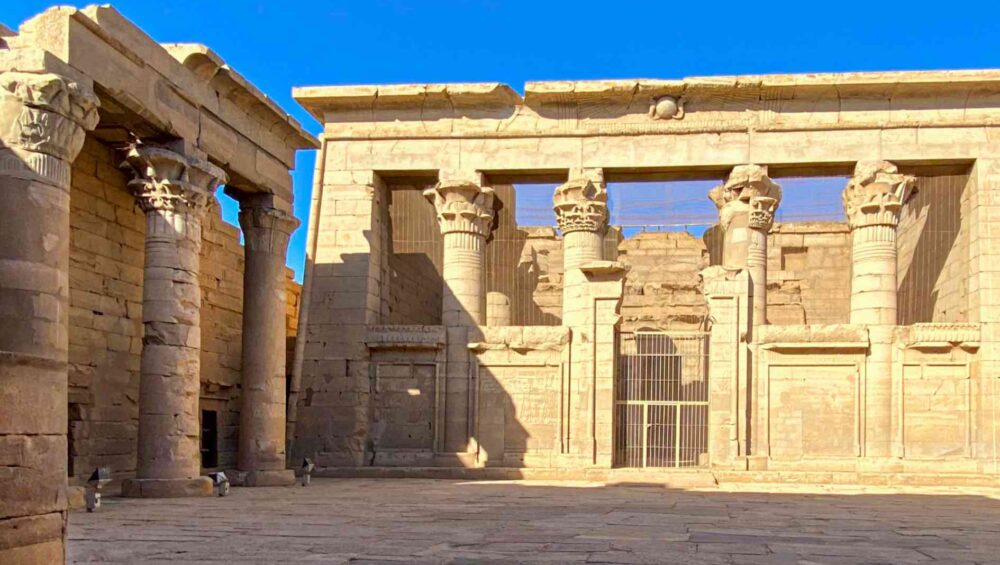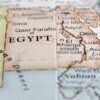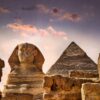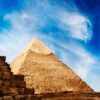The Kalabsha Temple, a mesmerizing testament to ancient Egyptian architecture and culture, stands as a beacon of historical significance and religious symbolism. Situated near Aswan, builders constructed the Kalabsha Temple around 30 BCE during the Roman era and dedicated it to the Nubian sun god Mandulis. As an architectural wonder and a storehouse of mythological tales, the Kalabsha Temple showcases a rich tapestry of stories and symbols, awaiting exploration. This article delves into the intricate hieroglyphs, friezes, architectural designs, and collaborative inscriptions that define the Kalabsha Temple, offering a comprehensive understanding of its historical and cultural importance.
Hieroglyphic Hieroglyphs: Unveiling the Stories Etched on the Kalabsha Temple Walls
Hieroglyphs were the language of the gods and were believed to hold magical properties. At Kalabsha Temple, these symbols provide insights into the religious practices and beliefs of the Nubians and Egyptians. The inscriptions often depict scenes of offerings made to Mandulis, highlighting the significance of this deity in the local pantheon. The precision and artistry involved in these carvings reflect the high level of skill and dedication of the artisans.
Moreover, the hieroglyphs reveal historical events and royal decrees, offering a glimpse into the political landscape of the era. The temple’s walls tell stories of conquests, alliances, and the divine right of kings, providing a comprehensive narrative of the temple’s historical context. By studying these inscriptions, historians and archaeologists can piece together the cultural and religious milieu of ancient Nubia and Egypt.
The hieroglyphs at Kalabsha Temple are more than just decorative elements; they are a written record of a bygone era, encapsulating the essence of ancient beliefs and traditions. As we decode these symbols, we uncover the profound stories etched into the very stones of the temple, offering a unique perspective on the past.
From Offering Scenes to Coronation Rituals: Deciphering the Kalabsha Temple’s Friezes
The friezes of the Kalabsha Temple are a visual feast, depicting a range of scenes from religious offerings to coronation rituals. These intricate carvings not only serve an aesthetic purpose but also provide a detailed account of the ceremonial practices associated with the temple.
Offering scenes are prominently featured in the temple’s friezes, illustrating the various forms of tribute paid to the gods. These scenes often depict priests and worshippers presenting gifts such as food, incense, and precious items to Mandulis. The detailed portrayal of these offerings underscores the importance of religious devotion and the role of ritualistic practices in ancient society.
Coronation rituals are another significant theme in the temple’s friezes. These carvings depict the enthronement of kings, showcasing the elaborate ceremonies that accompanied the ascent to power. The friezes often include images of the pharaohs being crowned by the gods, symbolizing the divine approval of their rule. These scenes highlight the intertwining of religion and governance, emphasizing the belief in the divine right of kings.
Additionally, the friezes offer insights into the daily life and activities of the temple community. Scenes of agricultural practices, hunting expeditions, and communal gatherings provide a snapshot of the socio-economic aspects of the time. The meticulous attention to detail in these carvings reflects the artisans’ commitment to capturing the essence of their world.
By deciphering the friezes of the Kalabsha Temple, we gain a deeper understanding of the religious and cultural practices that defined ancient Nubian and Egyptian society. These visual narratives serve as a valuable resource for historians and archaeologists, shedding light on the complex interplay between ritual, art, and daily life.
Architectural Allegory: Unveiling the Symbolic Meanings of the Kalabsha Temple’s Design
The architectural design of the Kalabsha Temple is a masterful blend of form and function, with each element imbued with symbolic significance. The layout and structure of the temple reflect the religious and cosmological beliefs of the time, serving as a physical manifestation of the divine.
Planners carefully oriented and aligned the temple to coincide with celestial events, such as the solstices and equinoxes. This alignment emphasized the temple’s function as a bridge between the earthly and divine realms. Designers strategically positioned the temple’s entrance and sanctuary to enhance the spiritual journey of the worshippers, leading them from the profane to the sacred.
Symbolic motifs are prevalent throughout the temple’s architecture, from the lotus and papyrus columns to the intricate carvings on the walls and ceilings. These motifs represent various aspects of creation, fertility, and rebirth, reinforcing the temple’s role as a center of worship and renewal. The use of these symbols highlights the importance of nature and its cycles in the religious practices of the time.
The architectural layout of the Kalabsha Temple also reflects the hierarchical structure of ancient society. The division of spaces within the temple, from the outer courtyards to the inner sanctuaries, mirrors the social stratification and the separation between the secular and the sacred. This spatial organization emphasizes the exclusive nature of religious practices and the privileged access granted to priests and royalty.
The use of architectural symbolism at the Kalabsha Temple provides a deeper understanding of the cultural and religious beliefs that shaped its construction. By examining the design elements, we can appreciate the temple’s role as a sacred space that bridged the gap between the human and divine.
A Collaborative Effort: Decoding the Stories Inscribed by Pharaohs and Priests
The inscriptions and carvings at the Kalabsha Temple are the result of a collaborative effort between pharaohs and priests, each contributing to the temple’s rich tapestry of stories and symbols. This partnership underscores the interconnectedness of religion and governance in ancient society.
Pharaohs, as the earthly representatives of the gods, played a crucial role in the construction and decoration of the temple. Their inscriptions often commemorate military victories, divine endorsements, and royal decrees, highlighting their achievements and legitimizing their rule. These inscriptions provide valuable insights into the political and military history of the time, offering a glimpse into the pharaohs’ ambitions and accomplishments.
Priests, on the other hand, were responsible for the religious and ceremonial aspects of the temple. Their inscriptions focus on the rituals, offerings, and mythological narratives that defined the temple’s religious practices. These inscriptions reflect the priests’ deep understanding of the religious doctrines and their role in maintaining the spiritual well-being of the community.
The collaborative nature of the inscriptions at the Kalabsha Temple illustrates the symbiotic relationship between pharaohs and priests. This partnership ensured the temple’s significance as both a political and religious center, reinforcing the interconnectedness of these two spheres in ancient society.
By decoding the stories inscribed by pharaohs and priests, we gain a comprehensive understanding of the multifaceted role of the Kalabsha Temple. These inscriptions serve as a testament to the collaborative effort that went into creating this sacred space, reflecting the diverse contributions that shaped its legacy.
The Kalabsha Temple as an Open Book: A Legacy of Stories Waiting to be Unraveled
The Kalabsha Temple stands as an open book, its walls, and friezes filled with stories waiting to be unraveled. This temple, with its rich symbolism and intricate carvings, offers a unique insight into the religious, cultural, and political landscape of ancient Nubia and Egypt.
The temple’s hieroglyphs, friezes, and architectural design collectively narrate a story that spans centuries, capturing the essence of an era defined by its devotion to the divine. Each inscription and carving serves as a piece of the larger puzzle, revealing the beliefs, practices, and values of the time.
As modern scholars continue to study and interpret the temple’s inscriptions, new layers of meaning are uncovered, shedding light on the complex interplay between religion, governance, and daily life. The Kalabsha Temple, with its enduring legacy, remains a vital source of knowledge and inspiration for historians, archaeologists, and enthusiasts alike.
In conclusion, the Kalabsha Temple is more than just an architectural marvel; it is a repository of stories and symbols that offer a window into the past. By delving into the symbolism and narratives inscribed on its walls, we can appreciate the temple’s significance as a cultural and religious landmark, preserving the legacy of ancient Nubia and Egypt for future generations.





